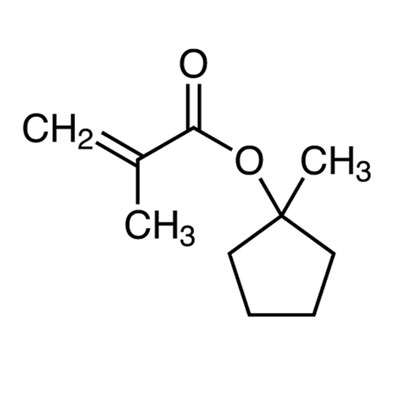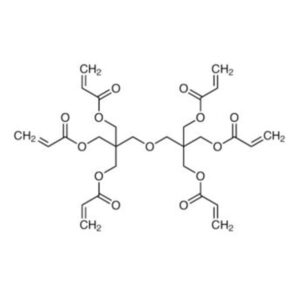Description
| Appearance | Colorless to Light yellow clear liquid |
| Purity(GC) | min. 98.0 % |
| Flash point | 74 °C |
| Specific Gravity (20/20) | 0.95 |
Applications: Photoresist monomer
Packaging and Shipping:
Packing:drum
Delivery:with in 5-7 working days.
Storage:
Being kept in dry, clean warehouse with well ventilation.
Avoid exposing to light and heating.
Protecting the product from leakage, rain and insolation during transportation.
Contact Us Now!
If you need Price and Sample Testing, please fill in your contact information in the form below, we will usually contact you within 24 hours. You could also email me info@longchangchemical.com during working hours ( 8:30 am to 6:00 pm UTC+8 Mon.~Sat. ) or use the website live chat to get prompt reply.
| Polythiol/Polymercaptan | ||
| CHLUMICRYL®DMES Monomer | Bis(2-mercaptoethyl) sulfide | 3570-55-6 |
| CHLUMICRYL® DMPT Monomer | THIOCURE DMPT | 131538-00-6 |
| CHLUMICRYL® PETMP Monomer | 7575-23-7 | |
| CHLUMICRYL® PM839 Monomer | Polyoxy(methyl-1,2-ethanediyl) | 72244-98-5 |
| Monofunctional Monomer | ||
| CHLUMICRYL® HEMA Monomer | 2-hydroxyethyl methacrylate | 868-77-9 |
| CHLUMICRYL® HPMA Monomer | 2-Hydroxypropyl methacrylate | 27813-02-1 |
| CHLUMICRYL® THFA Monomer | Tetrahydrofurfuryl acrylate | 2399-48-6 |
| CHLUMICRYL® HDCPA Monomer | Hydrogenated dicyclopentenyl acrylate | 79637-74-4 |
| CHLUMICRYL® DCPMA Monomer | Dihydrodicyclopentadienyl methacrylate | 30798-39-1 |
| CHLUMICRYL® DCPA Monomer | Dihydrodicyclopentadienyl Acrylate | 12542-30-2 |
| CHLUMICRYL® DCPEMA Monomer | Dicyclopentenyloxyethyl Methacrylate | 68586-19-6 |
| CHLUMICRYL® DCPEOA Monomer | Dicyclopentenyloxyethyl Acrylate | 65983-31-5 |
| CHLUMICRYL® NP-4EA Monomer | (4) ethoxylated nonylphenol | 50974-47-5 |
| LA Monomer | Lauryl acrylate / Dodecyl acrylate | 2156-97-0 |
| CHLUMICRYL® THFMA Monomer | Tetrahydrofurfuryl methacrylate | 2455-24-5 |
| CHLUMICRYL® PHEA Monomer | 2-PHENOXYETHYL ACRYLATE | 48145-04-6 |
| CHLUMICRYL® LMA Monomer | Lauryl methacrylate | 142-90-5 |
| CHLUMICRYL® IDA Monomer | Isodecyl acrylate | 1330-61-6 |
| CHLUMICRYL® IBOMA Monomer | Isobornyl methacrylate | 7534-94-3 |
| CHLUMICRYL® IBOA Monomer | Isobornyl acrylate | 5888-33-5 |
| CHLUMICRYL® EOEOEA Monomer | 2-(2-Ethoxyethoxy)ethyl acrylate | 7328-17-8 |
| Multifunctional monomer | ||
| CHLUMICRYL® DPHA Monomer | 29570-58-9 | |
| CHLUMICRYL® DI-TMPTA Monomer | DI(TRIMETHYLOLPROPANE) TETRAACRYLATE | 94108-97-1 |
| Acrylamide monomer | ||
| CHLUMICRYL® ACMO Monomer | 4-acryloylmorpholine | 5117-12-4 |
| Di-functional Monomer | ||
| CHLUMICRYL® PEGDMA Monomer | Poly(ethylene glycol) dimethacrylate | 25852-47-5 |
| CHLUMICRYL® TPGDA Monomer | Tripropylene glycol diacrylate | 42978-66-5 |
| CHLUMICRYL® TEGDMA Monomer | Triethylene glycol dimethacrylate | 109-16-0 |
| CHLUMICRYL® PO2-NPGDA Monomer | Propoxylate neopentylene glycol diacrylate | 84170-74-1 |
| CHLUMICRYL® PEGDA Monomer | Polyethylene Glycol Diacrylate | 26570-48-9 |
| CHLUMICRYL® PDDA Monomer | Phthalate diethylene glycol diacrylate | |
| CHLUMICRYL® NPGDA Monomer | Neopentyl glycol diacrylate | 2223-82-7 |
| CHLUMICRYL® HDDA Monomer | Hexamethylene Diacrylate | 13048-33-4 |
| CHLUMICRYL® EO4-BPADA Monomer | ETHOXYLATED (4) BISPHENOL A DIACRYLATE | 64401-02-1 |
| CHLUMICRYL® EO10-BPADA Monomer | ETHOXYLATED (10) BISPHENOL A DIACRYLATE | 64401-02-1 |
| CHLUMICRYL® EGDMA Monomer | Ethylene glycol dimethacrylate | 97-90-5 |
| CHLUMICRYL® DPGDA Monomer | Dipropylene Glycol Dienoate | 57472-68-1 |
| CHLUMICRYL® Bis-GMA Monomer | Bisphenol A Glycidyl Methacrylate | 1565-94-2 |
| Trifunctional Monomer | ||
| CHLUMICRYL® TMPTMA Monomer | Trimethylolpropane trimethacrylate | 3290-92-4 |
| CHLUMICRYL® TMPTA Monomer | Trimethylolpropane triacrylate | 15625-89-5 |
| CHLUMICRYL® PETA Monomer | 3524-68-3 | |
| CHLUMICRYL® GPTA ( G3POTA ) Monomer | GLYCERYL PROPOXY TRIACRYLATE | 52408-84-1 |
| CHLUMICRYL® EO3-TMPTA Monomer | Ethoxylated trimethylolpropane triacrylate | 28961-43-5 |
| Photoresist Monomer | ||
| CHLUMICRYL® IPAMA Monomer | 2-isopropyl-2-adamantyl methacrylate | 297156-50-4 |
| CHLUMICRYL® ECPMA Monomer | 1-Ethylcyclopentyl Methacrylate | 266308-58-1 |
| CHLUMICRYL® ADAMA Monomer | 1-Adamantyl Methacrylate | 16887-36-8 |
| Methacrylates monomer | ||
| CHLUMICRYL® TBAEMA Monomer | 2-(Tert-butylamino)ethyl methacrylate | 3775-90-4 |
| CHLUMICRYL® NBMA Monomer | n-Butyl methacrylate | 97-88-1 |
| CHLUMICRYL® MEMA Monomer | 2-Methoxyethyl Methacrylate | 6976-93-8 |
| CHLUMICRYL® i-BMA Monomer | Isobutyl methacrylate | 97-86-9 |
| CHLUMICRYL® EHMA Monomer | 2-Ethylhexyl methacrylate | 688-84-6 |
| CHLUMICRYL® EGDMP Monomer | Ethylene glycol Bis(3-mercaptopropionate) | 22504-50-3 |
| CHLUMICRYL® EEMA Monomer | 2-ethoxyethyl 2-methylprop-2-enoate | 2370-63-0 |
| CHLUMICRYL® DMAEMA Monomer | N,M-Dimethylaminoethyl methacrylate | 2867-47-2 |
| CHLUMICRYL® DEAM Monomer | Diethylaminoethyl methacrylate | 105-16-8 |
| CHLUMICRYL® CHMA Monomer | Cyclohexyl methacrylate | 101-43-9 |
| CHLUMICRYL® BZMA Monomer | Benzyl methacrylate | 2495-37-6 |
| CHLUMICRYL® BDDMP Monomer | 1,4-Butanediol Di(3-mercaptopropionate) | 92140-97-1 |
| CHLUMICRYL® BDDMA Monomer | 1,4-Butanedioldimethacrylate | 2082-81-7 |
| CHLUMICRYL® AMA Monomer | Allyl methacrylate | 96-05-9 |
| CHLUMICRYL® AAEM Monomer | Acetylacetoxyethyl methacrylate | 21282-97-3 |
| Acrylates Monomer | ||
| CHLUMICRYL® IBA Monomer | Isobutyl acrylate | 106-63-8 |
| CHLUMICRYL® EMA Monomer | Ethyl methacrylate | 97-63-2 |
| CHLUMICRYL® DMAEA Monomer | Dimethylaminoethyl acrylate | 2439-35-2 |
| CHLUMICRYL® DEAEA Monomer | 2-(diethylamino)ethyl prop-2-enoate | 2426-54-2 |
| CHLUMICRYL® CHA Monomer | cyclohexyl prop-2-enoate | 3066-71-5 |
| CHLUMICRYL® BZA Monomer | benzyl prop-2-enoate | 2495-35-4 |
| Other Monomer | ||
| CHLUMICRYL® MCPMA Monomer | 1-Methylcyclopentyl Methacrylate | 178889-45-7 |
| CHLUMICRYL® TMPMP Monomer | Trimethylolpropane Tris(3-mercaptopropionate) | 33007-83-9 |
| CHLUMICRYL® CTFA Monomer | Cyclic Trimethylopropane Formal Acrylate | 66492-51-1 |
| CHLUMICRYL® HPHPDA Monomer | 30145-51-8 | |
| CHLUMICRYL® MPEG Monomer | 26915-72-0 | |
The future development trend of acrylic polyurethane coatings
Today’s coatings industry is in full swing, a variety of new coatings are widely used, although acrylic polyurethane topcoat was just applied to the construction market at the beginning of the performance of such as weather resistance, water resistance and other non-sense, but acrylic polyurethane topcoat as a healthy coating materials still quickly gained a large number of loyal users, the surface of the surface coated with acrylic polyurethane topcoat of the metal structure of the service life of the structure has also been greatly improved, the main building also plays a good role in protecting the building. The service life of metal structures coated with acrylic polyurethane topcoat is also greatly improved, and the main body of the building is also well protected.
Acrylic polyurethane topcoat is based on epoxy resin, with the characteristics of zero VOC, beautiful coating film, easy recycling of spraying, and saving of production cost, and it has become the most popular coating material for manufacturers and users immediately after it was first applied in the automobile manufacturing industry.
Of course the coating capacity structure of the embodiment of the many different aspects of a very good application capacity. Ship pipeline anticorrosive appearance materials need to be solvent-free, powder form of the spray material, in order to facilitate the construction and appearance of protection, and acrylic polyurethane coatings as a kind of can spray and can be melted into a film of new coatings, can be very good to meet the needs of this project. Metals used in marine vessels are usually subjected to more UV irradiation and seawater erosion than other industrial objects, and degradation is extremely fast, while acrylic polyurethane coatings are extremely poor in weathering performance, abrasion and corrosion resistance, as well as light and colour retention, all of which provide good maintenance and cost control for the production and use of ships.
Acrylic polyurethane coatings have a wide range of applications in pipelines, tanks and a variety of metal components in petroleum, chemical, refining, gas, municipal construction, water conservancy and other heavy industries. It can effectively reduce the corrosion of various media and environment on storage tanks and pipelines, etc., and prolong the service life, and low cost, good air-drying, convenient construction, to reduce environmental pollution, saving investment plays a significant economic and social benefits.
The future structure of the global coating capacity is also reflected in the application of marine anti-corrosion. Ship steel pipe almost universal ship each structure system, such as seawater pipelines, steam and waste water pipelines, fuel oil pipelines, sewage pipelines, etc., to understand the acrylic polyurethane coatings powder coating and easy to recycle the characteristics of non-depletion so that compared with other coatings are more suitable for the coating and protection of ship steel pipe. With the improvement of anti-corrosion technology and optimisation of performance achieved by acrylic polyurethane coatings, the acrylic polyurethane coatings market will also occupy a considerable share in the future application of marine systems.





